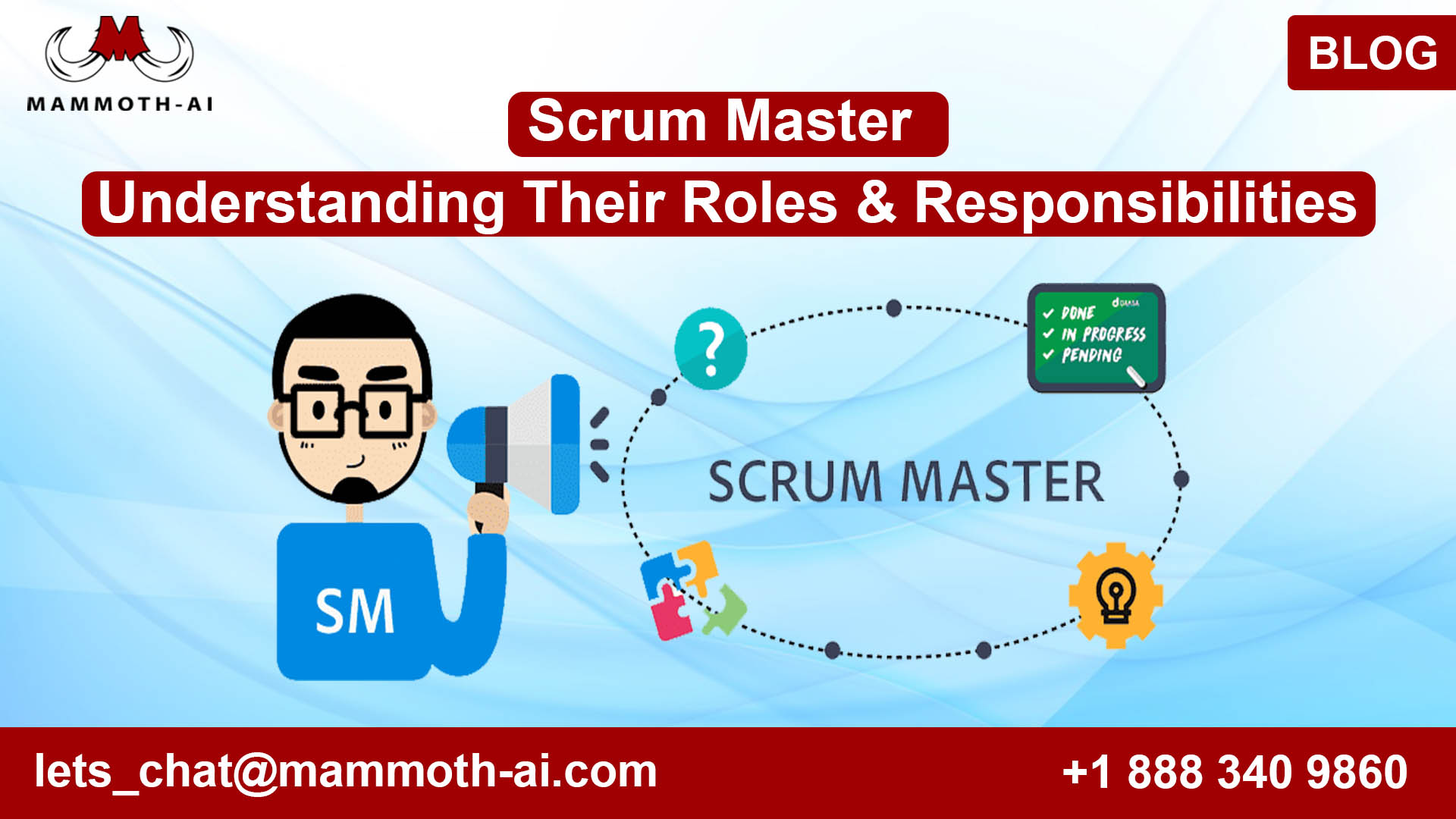What is the job of a Scrum Master, and how does it fit into a project? This is a crucial question for everyone interested in agile development.
You’ll learn what a Scrum Master is and how he helps other members of an agile team in this post.
What is a Scrum Master?
To understand the role of a Scrum Master, we need to gain an understanding of the Scrum process.
Scrum is a framework for a team’s productive collaboration in the development of long-term software. This framework is built on Agile Methodology concepts. Scrum enables the formation of self-organizing teams that can adjust quickly to changes.
There are sprints in Scrum that last one to two weeks. The Scrum team consistently produces shippable software. Stakeholders and the development team gather at the end of each sprint to plan the next sprint’s deliverables.
There are three critical roles in a Scrum:
Roles in a Scrum:
Product Owner
The vision for the program to be produced is held by the Product Owner. A Product Owner is concerned with the needs of the business and the market. PO also maintains track of all of the tasks that must be completed.
Scrum Team
Everyone in a Scrum team has a list of duties to do in order to deliver shippable software. The Scrum Team estimates how much work they will be able to do in each iteration.
Scrum Master
The Scrum Master ensures that the Scrum procedure is followed by the team. He plans meetings and deals with problems and bottlenecks. He also collaborates with the Product Owner to create the sprint’s product backlog. In a word, a Scrum Master is an agile development facilitator.
Scrum Master’s Role in the Scrum Process
Let’s take a closer look at the Scrum Master’s function in agile development.
Setting product goals is the first step in the Scrum methodology. The Scrum Master works with the Product Owner to understand the vision for the software being developed and the objectives to be met.
With the support of the Product Owner, the Scrum Master creates “User Stories.” What the user wants and why they want it are explained in User Stories. The Product Owner organizes and prioritizes all of the user stories in a product backlog.
After that, the Scrum Master has a kick-off Scrum meeting with the developers to get commitments on the user stories that can be completed in the first sprint.
As the sprint begins, the Scrum Master has daily stand-up meetings with the development team to identify any obstacles or difficulties that may cause work to be delayed or plans to be changed.
During the sprint, the Scrum Master’s duty is to increase productivity and manage any blocking issues that require Product Owner participation.
In addition, the Scrum Master prepares the product backlog for the following sprint.
At the end of each sprint, the entire Scrum Team gathers to discuss the product backlog for the following sprint. Proposing ideas to improve efficiency in the next sprint is also part of this.
Stakeholders are shown a demo of the software at the end of a sprint. The Scrum Master gathers feedback from stakeholders in order to include it into the product backlog. The development team is also invited to an internal review meeting to provide suggestions on how to enhance the development team.
The Scrum Master concentrates on strategic considerations while the shippable software is delivered sprint by sprint. This includes working with the Product Owner to plan the product backlog and construct a product road map.
Scrum Master Roles and Responsibilities:
- To make daily scrum, sprint planning, sprint demo, and retrospective meetings more efficient.
- Focus on the scrum values of openness, honesty, and respect to resolve problems.
- Based on evidence, estimate the number of deliverables that can be produced in an iteration.
- Calculate and plan the total cost of the software development project.
- Coach the team in agile methods, focusing on people and interactions rather than processes and tools.
- Assist team members in defining goals and taking steps to accomplish them.
- Protect the team against outside meddling and distractions.
- Ascertain that the scrum process is being used correctly.
- Rather than leading his team, the Scrum Master serves them.
The Scrum Master’s role in the Scrum method leads in increased end-user and customer satisfaction.
How to become a Scrum Master?
A Certified Scrum Master (CSM) training is required to become a Scrum master. You’ll be able to interact with other Scrum specialists if you take a CSM course. To become a CSM, you must meet the following requirements:
- Become familiar with the Scrum process.
- Attend a Certified Scrum Master (CSM) course taught by a Certified Scrum Trainer.
- To pass the CSM exam, you must answer 24 out of 35 questions correctly.
Mammoth-AI is a tool designed to assist Scrum Masters in carrying out their responsibilities efficiently throughout the Scrum process. Through Mammoth-AI requirement module, a Scrum Master can work with the Product Owner to create the product backlog.
The Agile Board in Mammoth-AI aids in the planning and tracking of sprint deliverables. Every sprint, the Scrum Master can construct a new board and assign tasks to the Scrum Team. It also facilitates the tracking of deliveries.
Mammoth-AI’s Bugs module helps you keep track of all the bugs that are slowing down your project’s progress. Scrum Masters can also get graphical reports from Mammoth-AI to track the development’s effectiveness.
Summary
A Scrum Master is a facilitator of agile development who helps to facilitate the Scrum methodology. He serves as a pillar of support for the entire Scrum Team, as well as coaching them on agile principles.
For more info: https://www.qaaas.co.uk/testing-services/
Also Read: https://www.guru99.com/software-testing.html


